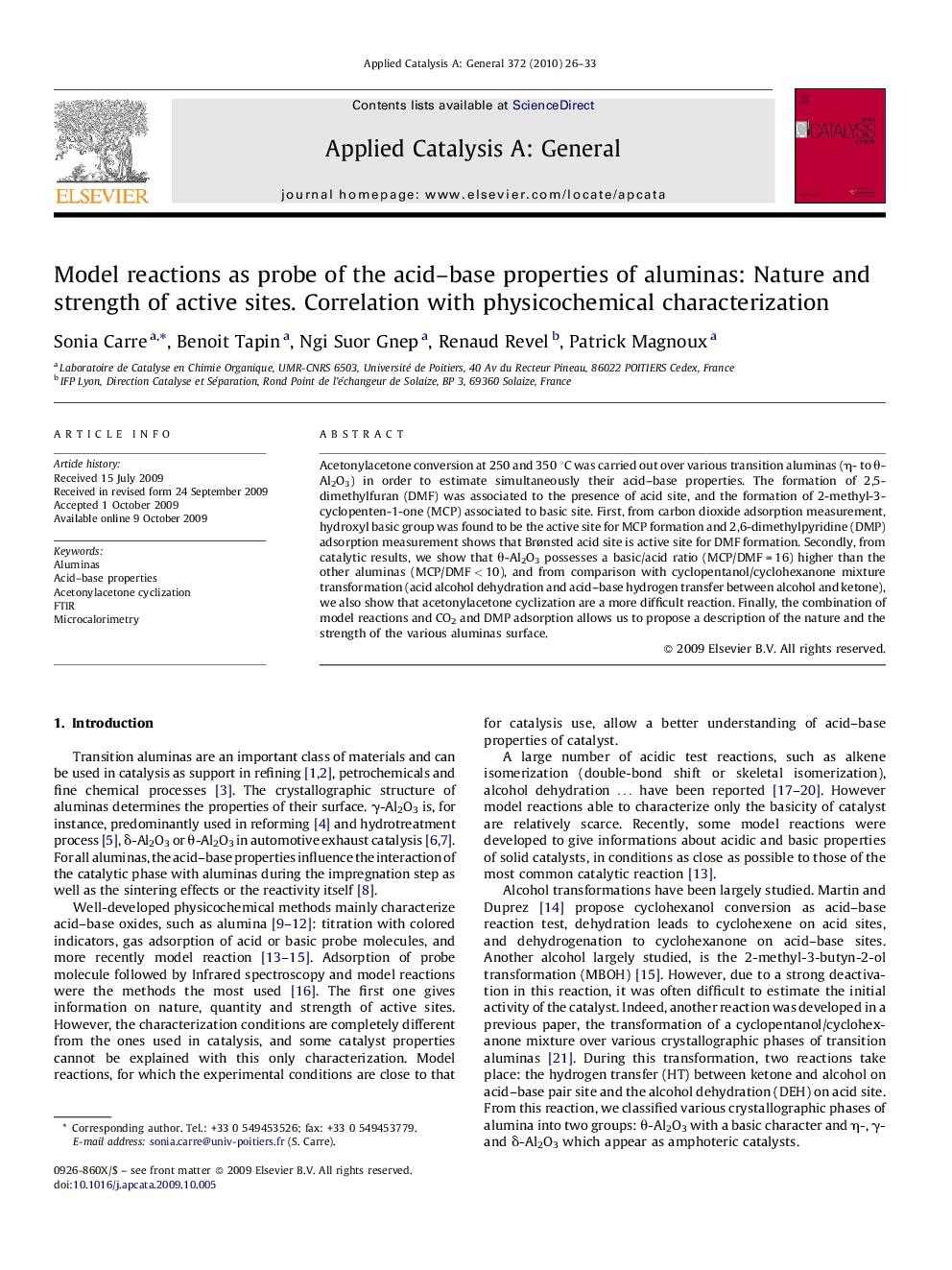| Article ID | Journal | Published Year | Pages | File Type |
|---|---|---|---|---|
| 42364 | Applied Catalysis A: General | 2010 | 8 Pages |
Acetonylacetone conversion at 250 and 350 °C was carried out over various transition aluminas (η- to θ-Al2O3) in order to estimate simultaneously their acid–base properties. The formation of 2,5-dimethylfuran (DMF) was associated to the presence of acid site, and the formation of 2-methyl-3-cyclopenten-1-one (MCP) associated to basic site. First, from carbon dioxide adsorption measurement, hydroxyl basic group was found to be the active site for MCP formation and 2,6-dimethylpyridine (DMP) adsorption measurement shows that Brønsted acid site is active site for DMF formation. Secondly, from catalytic results, we show that θ-Al2O3 possesses a basic/acid ratio (MCP/DMF = 16) higher than the other aluminas (MCP/DMF < 10), and from comparison with cyclopentanol/cyclohexanone mixture transformation (acid alcohol dehydration and acid–base hydrogen transfer between alcohol and ketone), we also show that acetonylacetone cyclization are a more difficult reaction. Finally, the combination of model reactions and CO2 and DMP adsorption allows us to propose a description of the nature and the strength of the various aluminas surface.
Graphical abstractAcetonylacetone conversion was carried out over various transition aluminas in order to estimate simultaneously their acid–base properties. The formations of 2,5-dimethylfuran (DMF) and of 2-methyl-3-cyclopenten-1-one (MCP) were associated to acid and basic sites, respectively. The combination of model reactions and CO2 and DMP adsorption allows us to propose a description of the nature and the strength of the various aluminas surface.Figure optionsDownload full-size imageDownload high-quality image (47 K)Download as PowerPoint slide
